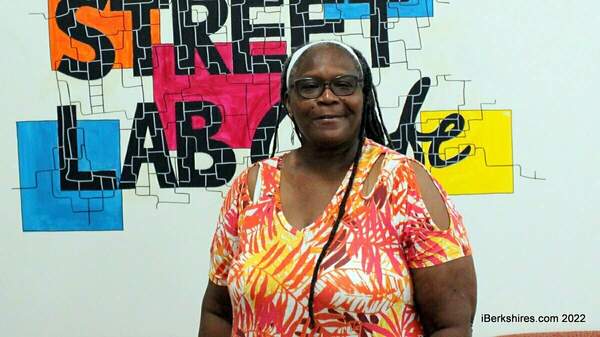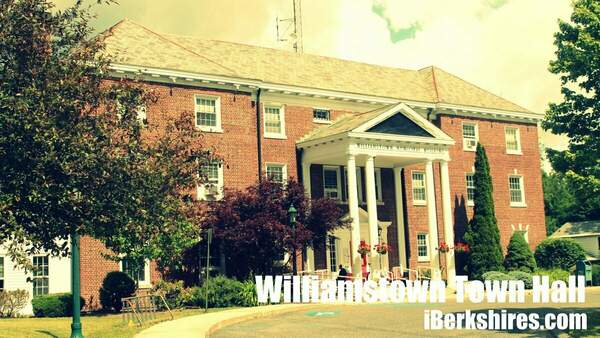Clark Art Expanding Reach, International Collaborations
 The Clark is developing its international and national collaborations. Above, bronzes from the Shanghai Museum currently on view. The Clark is developing its international and national collaborations. Above, bronzes from the Shanghai Museum currently on view. |
WILLIAMSTOWN, Mass. — The Clark Art Institute's recent reopening brought its world-traveling collection back home.
But the Clark's international cred was firmly established long before that.
The Clark is one of the few art museums that serves as a leading international center for research and scholarships. The institution's research program and academic programs offer fellowships and conferences.
"In terms of art history and museum work, the Clark has been an international collaborator at least since the 1960s," said Assistant Deputy Director Thomas Loughman. "It has been central to our identity particularly for the past two decades."
And, in 2000, the Clark became a founding member of the French Regional American Museum Exchange, a nonprofit organization that fosters partnership, projects and exchange of information, ideas, personnel, technology and resources.
Originally a consortium of nine museums in France and nine museums in the United States, FRAME presently has a total of 26 members in France, the United States and Canada.
As an example of how members benefit from having deeper links with other institutions, Loughman referred to the Response to Art Involves Self- Expression program.
Developed by the Clark in collaboration with Berkshire County Juvenile Court, the RAISE program provides an alternative to incarceration for teenage offenders, shifting from punishment to education, with art as a learning tool.
"It's about changing the participants' attitude and root behavior outside of what is acceptable," said Loughman. "We showcased the RAISE program at a convening of the FRAME group, and it has been copied by museums in the United States as well as in France.
"In Marseille, the south of France, there is a very high rate of teen non-violent crime, and the Musee des Beaux-Arts Palais Longchamp is doing the program on a scale 10 times larger than ours. It's successful for Marseille."
At the Clark, more than 110 boys and girls have graduated from the program since it was introduced in 1996.
The exchange relationship between art museums benefits visitors to the institutions, as collections are circulated.
Gabriele Finaldi, deputy director of collection and research at Museo Nacionale del Prado in Madrid, is currently a Clark Fellow compiling a catalogue raisonne of drawings by Jusepe de Ribera, in conjunction with an exhibition at the Prado in 2016.
"I'm grateful to the Clark for giving me the opportunity to work on the project here," said Finaldi. "The environment is perfect for quiet research. I don't get much time for that in Madrid. The library is excellent and the staff is extremely professional."
Finaldi first to the Clark in 2009 to discuss an exhibition of its Renoirs at the Prado.
"Pasion for Renoir" was visited by 357,201 people in Madrid.
"It was very remarkable for the people. We have no Renoirs in our collection," said Finaldi.
 'Make It New' features works from the National Gallery. 'Make It New' features works from the National Gallery. |
Loughman said the Clark has been in discussions about an exchange relationship with Prado for several years.
"Sending the Renoirs to them was just part of an exchange," he said. "We have hosted three curators from the Prado who pursued their own program. We have developed a friendship and deep level of trust."
Now, a reciprocal exchange is being discussed at meetings: Prado sending art work to the Clark for an exhibition in 2016. "I hope people will find it fascinating," said Finaldi.
People in different countries posses different tastes in art, Finaldi said, "largely determined by what they have grown up with, what they have seen in their home city."
"People travel much more nowadays, however, and are more knowledgeable than years ago," he said. "I grew up in London with the collections of the National Gallery and the Tate Gallery, and such early experiences of art are very formative and educate your eye and your taste."
On the Clark campus, the newly constructed 44,400-square-foot Clark Center includes 11,000 square feet for special exhibits.
The debut exhibit is "Cast for Eternity: Ancient Ritual Bronze from the Shanghai Museum" in the West Pavilion.
The first show in the main special exhibition gallery is "Make it New: Abstract Painting 1950-1975 from the National Gallery of Art, Washington."
"We approached Harry (Cooper, curator and head of modern art at the National Gallery) and he told us a construction project at the National Gallery was going to result in the closing of the East Building (in which modern art hung)," said Loughman.
Loughman said the "general sentiment" held by all would be to bring the works to the Clark.
"Wouldn't it be great," he said, to exhibit at the Clark works of art created in a time span that [coincided with] the institute's conception (c.1950) and early life of the white building from opening day on May 17, 1955, through the opening of the building now known as the Manton Research Center in 1973?"
Instead of storing the art work, the National Gallery decided to freely circulate it at the Clark.
"There was a deep sense of trust and a grand view for what is possible," said Loughman
David Breslin, curator special projects, and Cooper curated the exhibition, which features such key works as Jackson Pollack's Number 1 (Lavendar Mist) 1950; Mark Rothko's No. 1 (1961) ; and Lee Bontecou’s Untitled 1962.
"It is a small world of incredibly dedicated people that make incredible experiences for the broader public," Loughman said. "In my 20 years, I have witnessed and been the beneficiary of colleagues all over the globe dedicated to the idea that exchange and collaboration make life a celebration of human achievement."
Tags: Clark Art,















